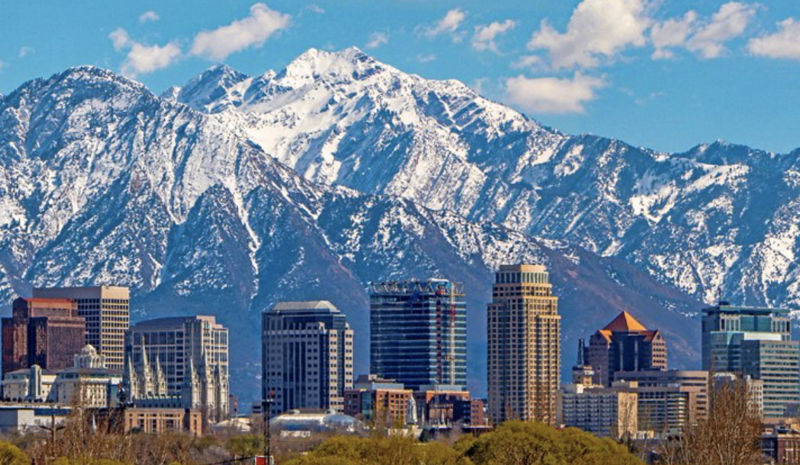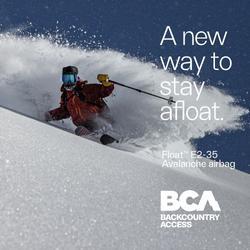
Drew Hardesty
Forecaster
A Seasonal Approach to Terrain
Anna Keeling

Late December in Utah, a couple of years ago: I was in a second-hand gear shop in Utah. A guy asked me what I thought about conditions on the Salt Lake Twins. At 11,329’ in altitude, the Twins soar 7000 feet above Salt Lake City and there’s a fair amount of terrain to get through to even top out on their windy and lofty summits.
People often ask me what I think about conditions. I think about conditions most of the time. I watch the mountains from the valley - whether I am in Castle Hill Village or in Salt Lake City. I’ll look out the window before I consult any website (even when it’s dark). I’ll look for wind plumes, for frost, for fresh snow, for rain, for snow melting off the roof, for clear skies - and every day I wonder “what has changed?”
“Why would you go up Twin Peaks tomorrow?” I asked the guy in the shop.
“I have the day off and want to do something big,” he replied.
We chatted about conditions. About the persistent weak layer that was currently haunting the Wasatch snowpack, the basal facets that were still less than a few feet down in the pack. The wind plumes that frequently pour off the highest summits of the Wasatch, the 5000+ foot/1500m approach to these summits and the sheer volume of complex terrain to be travelled to even get a view to the tops.
My friend Nancy grew up in Jackson Hole. Now in her early 50’s, she told me that when she was at high school, no-one would ski Glory Bowl until mid-April. Glory bowl is the fantastic toilet-shaped bowl that rears over the village of Wilson and the Teton pass road. In Nancy’s high school era, common thinking was to let the pack become deep and settled before hitting Glory bowl. Now days it’s skied all season from woe to go. People get caught there. Sometimes the whole thing goes big and flushes out onto the highway.
Froth. Films. Social media. Big talk. It’s well and truly alive in the US but we are not far behind. Great snow is a scarce resource (unless you are one of the fortunates who have so many back-to-back seasons that you’ll happily sit out a powder day to avoid crowds and avoid having to witness people doing scary things). The hit list is long, time feels short. You’ve lined up the weekend and damned if you’ll let poor conditions stand in your way.
“Dude,” (sometimes I try to use bro-speak to get my message through), “Why not wait?” I was slightly impatient but trying to be nice: “It’s so early in the season, it’ll be dark by 5. There’s a persistent weak layer less than 3 feet down, it’s cold, there’s wind blowing right now up there. You have no margin for error at this time of year. The pack is not yet settled. There is no reason to go there. Wait. Wait until late February when the snow is deeper, when there have been a few fine days in a row.”
After 22 season back-to-back and all the countless before that - the seasons I ski patrolled or ski guided in Canada - I must have skied 65 seasons by now and I’m 50 - I’ve learned a couple of things about patience:
Choose your objectives according to the time of year. This is my strategy: Every season I try to teach a few avalanche classes early on, before starting to guide. This eases me into the season - it forces me to train with beacons, shovel and probe, it sets up my pack and systems, it gets my head in the snow - looking at layers, familiarizing myself with the snowpack from the outset. It also helps me set up a base fitness for the rest of the season.
Another trick I have in North America is to eke out my summer in NZ and try to arrive late so that I miss the basal facet/persistent weak layer/early season excitement. This isn’t always possible but if I can get away with arriving in mid to late January, I’ll do it. This means extra caution - my head has not been in the pack so I must move carefully. I’ll try to line up my first few tours with a local forecaster, guide or experienced friend. It doesn’t work the other way around but luckily we don’t see persistently weak layers in NZ as often.
Wherever I am, I have the daily avalanche advisory emailed to me from first snow. Even if I’m late to arrive, I have some idea of how the weather and snow pack are developing. Once I’m ensconced into my season, I try to estimate each morning what the hazard rating will be - before reading the advisory. This keeps me on my toes, looking, thinking, evaluating.
If there is a weak layer in the pack - and the daily avalanche advisory plus some targeted digging will confirm this - I choose simpler terrain. I’ll potter around in casual places with low angle slopes, where I can avoid being under other users and meadow skip around on 30 degree slopes or less. At least I’m out.
As the season progresses into mid-late August (or February/March) and I become more comfortable with conditions and the pack deepens and settles, I can ease into bigger terrain. I talk with others about what they have seen. My guided trips will go further afield. I may dig less and probe more. When spring arrives in mid-September, I’ll venture out into glaciated terrain. Hopefully snow will have filled in crevasses, the days will be longer, it will be warmer.
I like the guy in the shop in Utah. I want to see him have a fun season but I want to see him in the shop again. I hate it when people I know and like become statistics. He agreed that it was too early for the Salt Lake Twins. He hadn’t thought about that aspect of seasonal planning - that waiting until spring will be more fun, less scary, less cold, less dark. It will make more sense. The peaks should still be there next year if conditions never come right this time around. In the meantime, I’ll try to find good snow, interesting tours and terrain and keep my rigmarole of seasonairing on the move.

Anna has been a fully certified IFMGA guide since 2002 and is accomplished in all of the disciplines: rock, ice, alpine, and ski mountaineering. At this point in her career she is highly sought out to train and educate aspiring guides. Anna has guided around the world, but calls New Zealand (where she was born and spends half the year) and Salt Lake City home. A talented writer in her own right, Anna blogs about her adventures and other musings on her blog here. You can find her guiding operation in New Zealand here. She's married to the award-winning documentary film-maker Scott Simper and the two have an thirteen year old son, Obie.
We sat down with Anna a few years ago on the Utah Avalanche Center podcast. Listen HERE or find it anywhere you listen to your favorite podcasts.
In this podcast, we interview international mountain guide Anna Keeling. Anna has been a fully certified IFMGA guide since 2002 and is accomplished in all of the disciplines: rock, ice, alpine, and ski mountaineering. At this point in her career she is highly sought out to train and educate aspiring guides. Anna has guided around the world, but calls New Zealand (where she was born and spends half the year) and Salt Lake City home. A talented writer in her own right, Anna blogs about her adventures and other musings on her bloghere. You can find her guiding operation in New Zealand here.She's married to the award-winning documentary film-maker Scott Simper and the two have an eleven year old son, Obie.




Comments